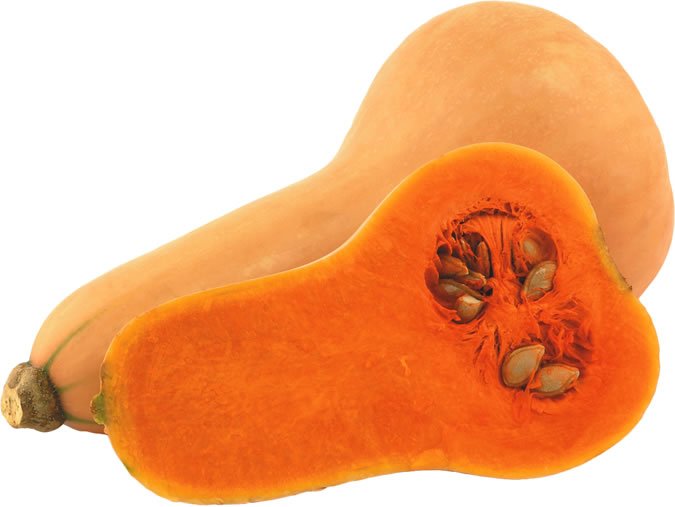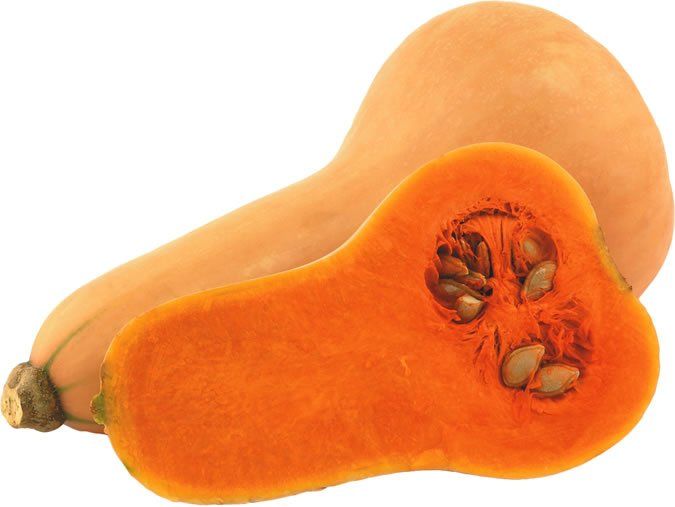Image by Thinkstock

This seasons culinary and cultural spotlight shines on the pumpkin, but the jack-o-lanterns less-celebrated cousins-winter squash-are also at their peak of flavor and nutrition. Like the pumpkin, butternut, acorn and other winter squash are technically fruits, but are consumed more like vegetables. Though they vary by species, winter squash are at least as nutritious as pumpkin and deliver more nutrients than summer varieties like zucchini. Its no wonder the pre-Colombian Native Americans who first cultivated winter squash buried them with their dead to provide nourishment for the journey to the afterlife.
Winter squash are low in calories, with just 80 calories in a cup of cooked butternut squash, notes Diane L. McKay, PhD, an assistant professor at Tufts Friedman School. They are an excellent source of carotenoids and vitamin C, as well as fiber-with 6.6 grams of fiber in one cup of cooked butternut squash-and also a good source of potassium.
KNOW YOUR SQUASH: Winter squash and pumpkins are members of the Cucurbitaceae family of plants, which also includes summer squashes, cucumbers and melons. The most common varieties of winter squash include the pear-shaped, cream-colored butternut squash (pictured); dark-green-skinned acorn squash; the larger, less-flavorful Hubbard squash, which comes in several colors; green, striped or speckled turban squash; oblong, yellow, green-striped delicata squash; and buttercup squash, which looks a little like a dark-green pumpkin (also found in orange varieties). A Japanese variety, kabocha, is increasingly seen in US supermarkets; also shaped like a squat pumpkin or a turban, it has deep green skin and an especially sweet taste. Youll also see spaghetti squash, named for the way the flesh separates into strands when cooked; these can be served much like pasta.
All winter squash have an interior hue that falls along the spectrum of yellow to orange-a signal that, like carrots and pumpkins, theyre rich in alpha- and beta-carotene, precursors to vitamin A. Some studies, in fact, have rated winter squash as among the best sources of these compounds. One cup of cooked butternut squash provides nearly 23,000 IU of vitamin A-560% of the Daily Value, more than a comparable amount of pumpkin. Foods high in vitamin A may help protect against certain cancers, and vitamin A is essential to maintaining eye health and supports immune function. Vitamin A also supports cell growth and differentiation, playing an essential role in the maintenance of the heart, lungs, kidneys and other organs.
Most winter squash pack plenty of other, less-familiar carotenoid compounds, too, notably lutein and zeaxanthin, natural pigments associated with protecting your vision. Beta-cryptoxanthin, another vitamin A precursor found in winter squash, has been studied for anti-inflammatory properties and may reduce the risk of rheumatoid arthritis. Another study found people with the highest intake of beta-cryptoxanthin were 30% less likely to develop lung cancer.
SEEDS FOR SNACKING: You can even snack on the seeds of winter squash, which deliver their own bundle of nutrients. Once youve scooped out the seeds and pulp, separate the seeds and roast them on a cookie sheet at very low temperature-160 to 170 degrees-for 15 to 20 minutes. The low roasting helps avoid burning the fats in the seeds, which are mostly healthy mono- and polyunsaturated fats as in other seeds and nuts.
In short, winter squash deserve a place on your plate, and theyre actually more versatile than their more prominent pumpkin relatives. Being buried with winter squash, as ancient peoples were, is much too late to start enjoying their nutritional benefits.





















